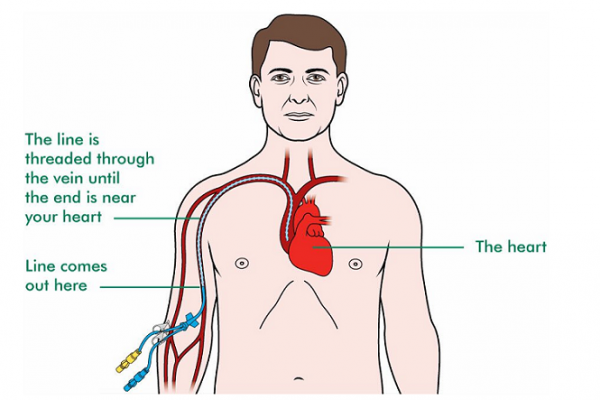A peripherally inserted central catheter (PICC), also called a PICC line, is a long, thin line through which medicines or liquid nutrition can be delivered to your body. PICC lines are sometimes called central lines or CVAD (central venous access devices).
The PICC line is inserted through a vein in your arm and passed through to the larger veins near your heart. This procedure is done in hospital and you will be given an anaesthetic so you won't feel the procedure. You may have some mild discomfort for a few days after.
Sometimes the line is divided into 2 or 3 lines. This allows you to have different treatments at the same time.

Image credits: PICC line (Macmillan, UK)








